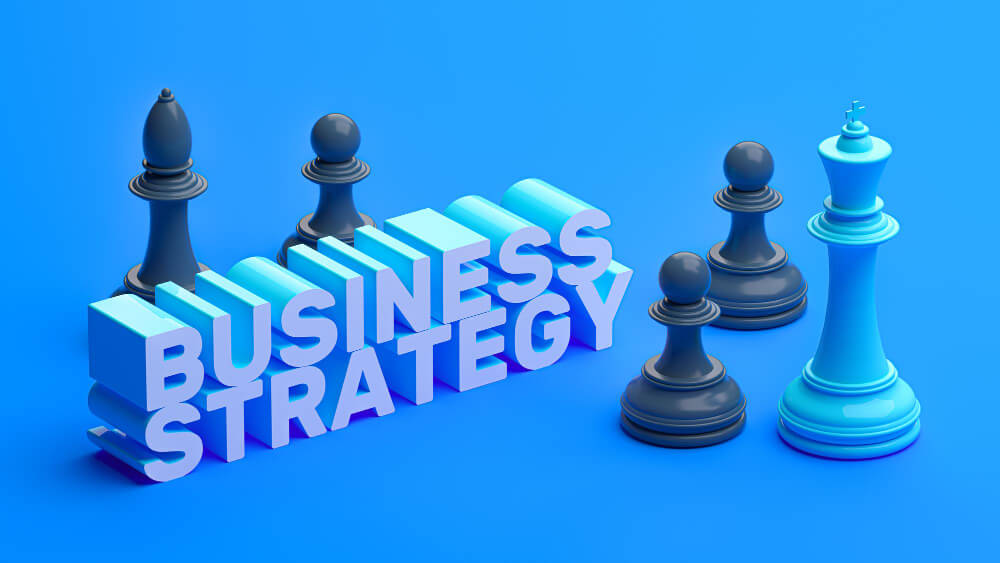Design Thinking in Business Strategy
Transforming strategic planning through human-centered design and creative problem-solving
Understanding Design Thinking as a Strategic Approach
Design thinking has evolved from a methodology primarily used by product designers to a powerful framework for business strategy and innovation. At its core, design thinking is a human-centered approach to problem-solving that places the needs, desires, and limitations of end-users at the forefront of the strategic development process. This shift represents a fundamental change in how organizations approach challenges, moving from traditional analytical methods to more creative, empathetic, and iterative processes.
The Five Stages of Design Thinking
1. Empathize
Understanding user needs, experiences, and motivations through observation and engagement
2. Define
Synthesizing insights to create a clear problem statement focused on user needs
3. Ideate
Generating diverse solution concepts through collaborative and creative thinking
4. Prototype
Creating scaled-down versions of solutions to test hypotheses and assumptions
5. Test
Gathering user feedback on prototypes to refine solutions iteratively
Unlike traditional strategic planning, which often follows a linear path from analysis to implementation, design thinking embraces ambiguity, encourages experimentation, and values learning through iteration. This approach is particularly valuable in today's volatile, uncertain, complex, and ambiguous (VUCA) business environment, where the ability to adapt quickly and respond to changing customer needs is critical for sustained success.
The Business Case for Design Thinking
Organizations that successfully integrate design thinking into their strategic processes typically realize significant benefits across multiple dimensions of their business. The Design Management Institute's Design Value Index has consistently shown that design-driven companies outperform the S&P 500 by more than 200% over a 10-year period.
Enhanced Innovation
Design thinking fosters a culture of innovation by encouraging diverse perspectives, challenging assumptions, and creating psychologically safe spaces for creative thinking. Companies like IBM have established design thinking as their primary framework for developing innovative solutions, resulting in significantly faster time-to-market and higher-quality outcomes.
Improved Customer Experience
By placing customer needs at the center of strategy development, organizations can create more meaningful and differentiated experiences. Companies like Airbnb have leveraged design thinking to reimagine the travel experience, creating services that deeply resonate with customer desires rather than simply addressing functional requirements.
Risk Reduction
The iterative nature of design thinking—with its emphasis on early testing and validation—allows organizations to identify and address potential issues before making significant investments. This "fail fast, learn fast" approach has helped companies like Procter & Gamble reduce the costs associated with failed product launches by 50%.
ROI of Design Thinking: Notable Examples
- Bank of America: Used design thinking to develop their "Keep the Change" program, resulting in 10 million new customers and $1.8 billion in savings for users
- Intuit: Implemented "Design for Delight" program based on design thinking principles, increasing revenue by over $1 billion in five years
- PepsiCo: Applied design thinking to reinvent the grocery shopping experience, leading to a 30% increase in sales in pilot stores
- IBM: Trained over 100,000 employees in design thinking, delivering $20.6M in efficiency gains
Integrating Design Thinking into Business Strategy
Successfully embedding design thinking into strategic processes requires a deliberate approach that touches organizational culture, structure, processes, and capabilities. Here's how organizations can effectively integrate design thinking into their strategic planning:
1. Start with Leadership Commitment
Design thinking thrives when it has visible support from leadership. Executives must not only endorse the approach but also model the behaviors that underpin it—curiosity, empathy, collaboration, and comfort with ambiguity. Companies like Microsoft have seen design thinking flourish when CEO Satya Nadella made it a cornerstone of the company's cultural transformation.
2. Create Cross-Functional Teams
Design thinking works best when diverse perspectives come together. Strategic planning teams should include representatives from different functional areas, levels of seniority, and backgrounds. This diversity helps challenge assumptions and generate more innovative solutions. Organizations like IDEO and Frog Design have pioneered the use of "T-shaped" professionals—those with deep expertise in one area but the ability to collaborate across disciplines.
3. Develop a Customer-Centric Orientation
At the heart of design thinking is a deep understanding of customer needs. Organizations should invest in developing robust capabilities for customer research, including ethnographic methods, journey mapping, and empathy interviews. Companies like Toyota regularly immerse their strategists and executives in customer contexts to develop intuitive understanding of user needs.
Customer Research Methods in Design Thinking
- Contextual inquiry
- Empathy interviews
- Shadowing
- Customer journey mapping
- Diary studies
- Co-creation sessions
- Jobs-to-be-done analysis
- Persona development
4. Embrace Visualization and Prototyping
Strategic concepts often remain abstract until visualized. Design thinking encourages the use of visual tools to make ideas tangible and testable. Organizations should incorporate visualization techniques like journey maps, service blueprints, and business model canvases into their strategic planning. Additionally, developing low-fidelity prototypes of strategic initiatives allows for early validation and refinement. Companies like Google with their "Design Sprint" methodology have built prototyping into strategic development, enabling them to test key hypotheses within a compressed timeframe.
5. Create Safe Spaces for Experimentation
Design thinking requires psychological safety—the confidence that team members won't be punished or humiliated for speaking up with ideas, questions, concerns, or mistakes. Organizations should establish norms and structures that encourage experimentation and view failures as learning opportunities. Companies like Pixar have created cultures where candid feedback and iterative development are the norm, allowing for strategic innovations to emerge through multiple rounds of refinement.
Design Thinking Tools for Strategic Planning
A variety of tools and frameworks can support the application of design thinking in strategic contexts. These tools help teams navigate the design thinking process more effectively and produce more innovative strategic outcomes.
| Design Thinking Phase | Strategic Tools | Strategic Application |
|---|---|---|
| Empathize | Stakeholder Maps, Empathy Maps, Jobs-To-Be-Done Framework | Identifying unmet customer needs and market opportunities |
| Define | Problem Statement Matrix, How Might We Questions, Value Proposition Canvas | Framing strategic challenges in human-centered terms |
| Ideate | Blue Ocean Strategy, Business Model Canvas, Brainstorming Techniques | Generating innovative strategic options and business models |
| Prototype | Minimum Viable Products, Scenario Planning, Service Blueprints | Testing strategic hypotheses with minimal investment |
| Test | A/B Testing, Customer Feedback Loops, Assumption Testing | Validating strategic direction before full implementation |
Featured Tool: Business Model Canvas with Design Thinking
The Business Model Canvas, developed by Alexander Osterwalder, has been enhanced through design thinking principles to create a more human-centered approach to business model innovation. This integration involves:
- Starting with customer segments: Using empathy research to deeply understand customer needs before defining value propositions
- Visualizing customer journeys: Mapping the customer experience across touchpoints to identify pain points and opportunities
- Rapid prototyping: Creating quick, low-fidelity versions of business models to test with real customers
- Iterative development: Continuously refining the business model based on customer feedback and market testing
Case Studies: Design Thinking in Strategic Transformation
PepsiCo: Designing Growth Through Consumer Experience
PepsiCo's former CEO Indra Nooyi championed design thinking as a strategic imperative, creating the role of Chief Design Officer and establishing a design-centered approach to innovation. This transformation led to:
- The development of new packaging designs that enhanced user experience while reducing environmental impact
- Creation of healthy snack options based on deeper understanding of changing consumer preferences
- Reimagined retail experiences that increased engagement and sales
The result was a 27% increase in revenue from innovation products and a strengthened position in the healthy snacks category.
Intuit: Design for Delight
Financial software company Intuit underwent a strategic transformation when founder Scott Cook realized the company was losing its innovative edge. The company introduced "Design for Delight" (D4D), a design thinking initiative focused on deeply understanding customer pain points and designing solutions that addressed their needs. Key outcomes included:
- Development of SnapTax, a mobile tax preparation app that dramatically simplified the filing process
- Creation of QuickBooks Online, which reimagined accounting software as a cloud-based service
- Establishment of innovation catalysts throughout the organization who coach teams in design thinking
This strategic shift led to Intuit doubling its stock price over a five-year period and maintaining market leadership despite new competitors.
Capital One: Banking Reimagined
Capital One has positioned itself as a design-led bank, using design thinking to transform its strategic approach to financial services. The company established Capital One Labs, a design thinking studio that brings together designers, product managers, and engineers to create customer-centered innovations. Notable initiatives include:
- Capital One Cafés, which reimagined the branch experience as a community space
- Design of digital tools that provide transparency and control for customers managing their finances
- Development of CreditWise, a free credit monitoring service that extends beyond the company's customer base
This design-focused strategy has helped Capital One become one of the most digitally advanced banks in the industry, with superior customer satisfaction scores and continued growth in a challenging market.
Challenges and Considerations in Implementing Design Thinking
While the benefits of design thinking in strategic contexts are compelling, organizations often face challenges when implementing this approach. Understanding and addressing these challenges is essential for successful adoption:
Cultural Resistance
Organizations with strong analytical traditions or risk-averse cultures may resist the ambiguity and experimentation inherent in design thinking. Addressing this challenge requires:
- Starting with small, low-risk projects to demonstrate value
- Celebrating early wins and sharing success stories
- Providing safe spaces for experimentation
- Gradually expanding the approach as confidence builds
Balancing Design Thinking with Analytical Approaches
Design thinking works best when complemented by analytical approaches rather than replacing them entirely. Organizations should:
- Use design thinking to generate innovative options and surface customer insights
- Apply analytical methods to validate concepts and optimize execution
- Develop integrated processes that leverage both creative and analytical thinking
- Train teams to recognize when each approach is most appropriate
Scaling Beyond Initial Projects
Many organizations successfully implement design thinking in isolated projects but struggle to scale the approach across the enterprise. Effective scaling strategies include:
- Developing internal capability through training and coaching programs
- Creating a network of design thinking champions across business units
- Adapting design thinking methods to fit different contexts within the organization
- Embedding design thinking principles in standard strategic planning processes
Measuring Impact
The benefits of design thinking can be difficult to quantify, particularly in the short term. Organizations can address this by:
- Developing a balanced scorecard that includes both quantitative and qualitative metrics
- Tracking leading indicators such as customer engagement and team innovation capabilities
- Measuring the speed and cost-effectiveness of strategic initiatives
- Conducting longitudinal studies to assess long-term impact on business performance
FAQ: Design Thinking in Business Strategy
How does design thinking differ from traditional strategic planning?
Traditional strategic planning typically follows a linear, analytical process focused on market data, competitive analysis, and financial projections. Design thinking complements this with a human-centered, iterative approach that emphasizes deep customer understanding, creative ideation, and rapid testing of concepts. While traditional planning often starts with organizational capabilities, design thinking begins with customer needs and works backward to develop innovative solutions.
Is design thinking only relevant for consumer-facing businesses?
No, design thinking is valuable for all types of organizations, including B2B companies, non-profits, and governmental agencies. While the specific methods may vary, the principles of empathy, experimentation, and human-centered design apply across contexts. For example, IBM has successfully applied design thinking to complex enterprise software, while the UK Government Digital Service has used design thinking to transform public services.
How long does it take to implement design thinking in an organization?
The timeline varies significantly based on organizational size, culture, and commitment. Small teams can begin practicing design thinking methods immediately, while enterprise-wide adoption typically takes 2-5 years to fully embed in culture and processes. Most organizations follow a phased approach, starting with pilot projects and gradually expanding as capabilities and confidence build. Leadership commitment and visible successes are key accelerators in the transformation process.
What skills are most important for design thinking in strategic contexts?
Beyond the technical aspects of design thinking methods, the most crucial skills include empathy (the ability to deeply understand others' perspectives), comfort with ambiguity (embracing uncertainty as part of the creative process), visual thinking (communicating ideas through images and prototypes), collaboration (working effectively across disciplines), and rapid learning (absorbing insights quickly and adapting approach). Organizations should develop these skills through training, practice, and hiring for cognitive diversity.
How can we measure the ROI of design thinking in strategic processes?
Measuring ROI requires a multi-faceted approach. Short-term metrics include innovation velocity (speed from idea to implementation), number of concepts tested, customer engagement with prototypes, and team satisfaction. Medium-term metrics cover customer adoption of new offerings, reduced costs of failed initiatives, and improvements in customer satisfaction. Long-term metrics include revenue from innovation, market share gains, and valuation premiums. Organizations should establish a baseline before implementing design thinking to accurately track improvement.
Ready to transform your strategic approach with design thinking?
Al Mithaq Institute offers comprehensive training in Design Thinking methodology for business leaders, strategists, and innovation teams. Learn practical tools and frameworks to apply design thinking in your organization.
Explore Our Courses






